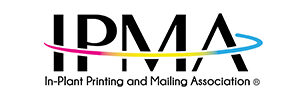Every operation has them. Those difficult clients with messy jobs, bad files and unrealistic expectations. The customers that your team tries to avoid. Their jobs result in chaos. And the refrain is: “Why can’t they be like department X (insert name of your best customer)?”

Can bad customers be good customers? Yes, they can. Problem solving starts with discipline for data collection, root cause analysis, and considerations for change management. I have helped teams define and implement changes in process and communications which have resulted in moving the needle with difficult customers. Here are strategies you can put into practice to convert your bad customers into good customers.
Work the problem not the personality
When jobs don’t go well there is typically stress, frustration and often some blaming to go around. The first rule to follow – work the problem not the personality. Coach your team to focus on the facts, and not the personality of the challenging customer. This means putting aside frustration, judgement and unpleasant email comments. As humans we tend to write things we would never say face to face. By focusing on the details of what steps were missed or where assumptions were made, your team can determine a path for change.
Assume good intent
They are not trying to be difficult customers. I promise. Bad customers commonly won’t use the web portal or storefront for job submission, may send files in different formats, or they may send multiple files for the same job. They may be guilty of not following your proof approval process. This behavior is often because they don’t fully understand the impact of their actions. By assuming good intent, you and your team can identify gaps in communication and points of failure. When your team starts with good intent, they will be in a place to identify what type of training and communications will change behavior. When customers truly understand the “why” for a process or rule, they are significantly more willing to conform.
Collaborate on change
In solving problematic jobs, the answers often have a component of training and communications. Understanding your customers’ business goals and desired outcomes for each job is foundational to changing behavior. Collaboration on change could mean conducting a planning call to review job changes at a regular cadence. It may also take the form of scheduling a capabilities review meeting when there is not a job in production. This will enable your team to demonstrate new finishing options, substrates, or other solutions that could positively change the results for your customer and how their job is processed. Show them what your department can do. A detailed explanation of all the steps you take to process their job may provide the “ah ha” moment. Be willing to try something new. Answer the – what if we could X? Small changes often lead to big results. This approach demonstrates a willingness to collaborate to improve process and outcomes.
Measure and communicate
After you have gathered the details for a specific customer job, designate communication leaders from each critical area. This mini team can then work together and closely monitor new process steps for better outcomes. Communicate the joint goals for timely submission, ease of processing, accurate work, and on-time delivery.
Remind the entire team of new process steps and new communication tasks prior to subsequent job submission. This action will define the new path forward by reinforcing why changes are being made.
Acknowledge collective wins
Celebrate the small wins and acknowledge the entire team effort. When difficult customers submit jobs on time and change their behavior so their jobs process smoothly, let everyone know. Measurement matters. When you can share that processing, finishing and delivery were improved by a measured amount of time or money, reduced errors, or labor, it’s a win. Thank and acknowledge the collective win for everyone involved. This will set the stage for improvements with other customers and boost positive communication with your team.
When you can communicate throughout your organization that your team did something new, the customer did something new, and there were positive results, it’s priceless. And everyone benefits when your team has more good customers.

Lois Ritarossi, CMC®, is the President of High Rock Strategies, a consulting firm focused on sales and marketing strategies, and business growth for firms in the print, mail and communication sectors. Lois brings her clients a cross functional skill set and strategic thinking with disciplines in business strategy, sales process, sales training, marketing, software implementation, inkjet transformation and workflow optimization. Lois has enabled clients to successfully launch new products and services with integrated sales and marketing strategies, and enabled sales teams to effectively win new business. You can reach Lois at https://www.highrockstrategies.com/ or Lritarossi@highrockstrategies.com
